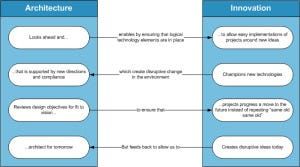Anti Innovation
Touchstone popped this up from the blogosphere:
Every company innovates until it finds a cash cow. At that point only innovation that supports the cash cow is promoted. Further, any innovation that threatens or does not support the cash cow languishes or is actively killed. Eventually, most of the true innovation ceases as the innovators leave and start new companies and the cycle repeats. From The Walrus and The Carpenter
Certainly at first glance there is some merit in this. But is it really true? After all, IBM originally created calculators (although there is a good argument that the computers of today just do what these machines did but faster), but at some point ended up a leading hardware and software company — in fact they define their business principle as innovation.My view on this is that I think it’s true to say that there are very few (if any) companies that change tack once they hit on their Hedgehog Concept (from Jim Collins in his book Good to Great). But does this mean they don’t innovate?No.Google continue to innovate and produce new web based solutions, some centered around search, others outside of this. But then their hedgehog idea would be something along the lines of being the worlds leading on-line software company. They don’t innovate around cars.The challenge for all businesses is to ensure that having a sound hedgehog concept — knowing what you are good at — doesn’t detract from allowing news ways of doing what you are good at to creep into vision. Many of us would be familiar with the project mentality which is that when under pressure to manage costs, time and scope, the natural reaction is to do things the same way I did them last time. While sound project and business practice, it’s the biggest “anti-innovator” within corporates today in my view.This is where Enterprise Architecture can help. I’ve created this diagram to show how I try explain the relationship between Architecture and Innovation.

Sound architectural practices are key to innovation. Without a view on the future, and a drive to ensure that projects comply and take advantage of newer technologies, innovation will always be constrained. Staying too focussed on what you’re good at, and not challenging the boundaries and introducing managed risk means you will never be innovative. Good Enterprise Architecture can help.
